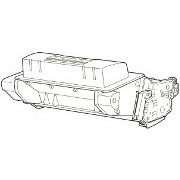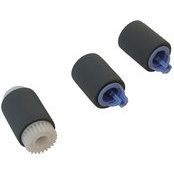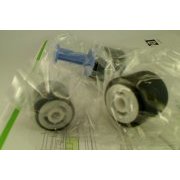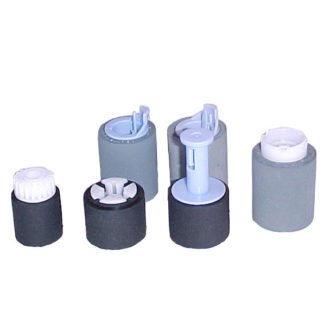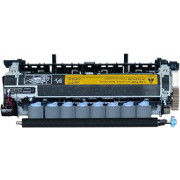New HP Brand Catridges
ProCopy Remanufactured Cartridges
Cost Effective
Demand for printers like the LaserJet P4010 series has two driving factors: cost and reliability
Almost everyone would like brightly coloured documents but they cost more. Colourant in four or more cartridges costs more than one cartridge with plain black.
The monochrome laser printer mechanism, which we will look at below, has an elegant simplicity. Images made by light, electricity and rotating rollers.
Cartridges are a key component. People often call them toner cartridges but HP cartridges don't just contain the toner but most of the parts of the print mechanism that might wear out. Refreshing the printer innards by installing a new cartridge gives a high degree of reliability.
With its big office printers HP carried that idea forward and made the fuser and pickup rollers exchangeable as well - so printers rarely need specialist attention, they can be fixed with user installed maintenance kits.
New Printers
HPs refreshes its printer line every few years. A new series the M604, M605 and M606 were introduced in spring 2015.
LaserJet P4014 machines are not available new. They come onto the market second hand or as the trade has it "refurbished" - in clean working condition.
The P4014 series are eminently repairable and can be worth buying second hand. Replacement prices will put this in context. Note that new printers don't take the same cartridges. If you have a stock of cartridges for the P4014 they won't work with the new printer. They look the same but keyways prevent them fitting. Note also that in 2015 refilled or re-manufactured cartridges for the new printers are rare, so if the economics of your print job rely on really low cartridge prices repairing a P4014 will be a better bet than buying a new printer.
Replacement Printer Models
-
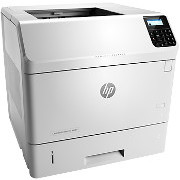
E6B67A HP Laserjet Enterprise M604n
Please email us to confirm availability
A4 Mono (B&W)
LAN, USB
5,000 - 13,000 pages/month
10,000 page cartridge
-
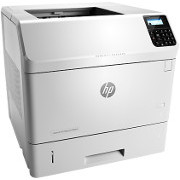
E6B68A HP Laserjet Enterprise M604dn
Please email us to confirm availability
A4 Mono (B&W)
Automatic Duplex
LAN, USB
5,000 - 13,000 pages/month
10,000 page cartridge
-
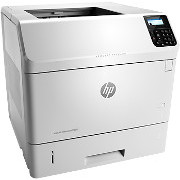
E6B69A HP Laserjet Enterprise M605n
Please email us to confirm availability
A4 Mono (B&W)
LAN, USB
5,000 - 16,000 pages/month
25,000 page cartridge
-
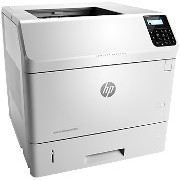
E6B70A HP Laserjet Enterprise M605dn
Please email us to confirm availability
A4 Mono (B&W)
Automatic Duplex
LAN, USB
5,000 - 16,000 pages/month
25,000 page cartridge
-
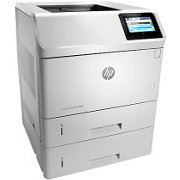
E6B71A HP Laserjet Enterprise M605x
Please email us to confirm availability
A4 Mono (B&W)
Automatic Duplex
LAN, USB
5,000 - 16,000 pages/month
25,000 page cartridge
-

E6B72A HP Laserjet Enterprise M606dn
Please email us to confirm availability
A4 Mono (B&W)
Automatic Duplex
LAN, USB
5,000 - 20,000 pages/month
25,000 page cartridge
-
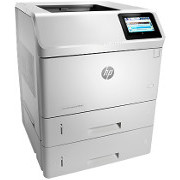
E6B73A HP Laserjet Enterprise M606x
Please email us to confirm availability
A4 Mono (B&W)
Automatic Duplex
LAN, USB
5,000 - 20,000 pages/month
25,000 page cartridge
Paper Feed Kits
Maintenance Kits
HP P4014, P4015 and P4515 Printers (P4010 Series).
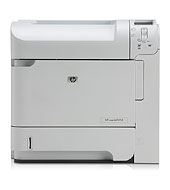
The LaserJet P4014, P4015 and P4515 were HP's mainstream office printing machines from 2008 to 2011. They come from a long product line; successors to the LJ-4200, and predecessors of the M601 series. In spring 2015 HP refreshed the line-up again with the M604 series
The M604, M605 and M606 have more contemporary styling, some new features particularly for print security and rather more sophisticated software. One new feature is that some sport "tablet like" touchscreens as control panels. New printers look different but the internal design remains the same and indeed the service manual still uses old diagrams.
Product Names and Connections
HP adopt some odd product names. The P4014 and P4015 are sometimes called the "P4000" series by HP - or even "P4010" series. This can result in people dropping the "P" and saying "LaserJet 4000", an older printer still often used. Meanwhile the P4515 is sometimes called the "4500 series" - there was a "Colour LaserJet 4500" and a "DesignJet 4500". The P4515 is like the P4015 except perhaps in the minds of marketing people.
A series may have been intended but then HP decided to introduce a new naming policy with the feel-good word "Enterprise" in it, a class number and a three digit model number - so the successors introduced in 2011 are :
- LaserJet Enterprise 600 M601 (P4014)
- LaserJet Enterprise 600 M602 (P4015)
- LaserJet Enterprise 600 M603 (P4515)
A new multifunction version of the printer came out just prior to the new naming scheme - it got an M prefix because it was multifunction but an old style 4-digit number "M4555" - its successor is the M630.
Just as people had taken to calling these the "M600 series" HP brought out a new set of printers in 2015:
- LaserJet Enterprise 600 M604 (like M601)
- LaserJet Enterprise 600 M605 (like M602)
- LaserJet Enterprise 600 M604 (like M603)
New printers look nothing like their predecessors from the outside (very like inside) which spoils the idea of an M600 series. Perhaps HP marketing would prefer us not to have a collective name, but as engineers we insist. So we tend to drop the superfluous word "Enterprise" and say
- P4014 series - the P4014, P4015, P4515
- M601 series - the M601, M602, M603 and M4555
- M604 series - the M604, M605, M606 and M630.
We think the P4014 engine common to them all had the internal code name "Zorro / Toronado" - hence perhaps its black and white look.
Market Position
This article is mainly about engineering, as is the website generally. There is a technical side: materials, forces, motors and movement. There is also a socio-economic side - why not just put old printers in the bin and get another? One answer is that buying or fixing a printer is usually a trivial cost - compared to what you will spend on cartridges. And indeed, why have laser printers - or indeed any printers at all. Printers are widely regarded as a pain in the ass.
Hewlett Packard became the number one brand in office printing in the 1980s and has retained that position since. The main competition comes from Lexmark, Brother, Fuji-Xerox and more recently Samsung.
Black and white print is a key battleground. Mass produced print like books and magazines are generally made using offset lithography. At the other end of the size spectrum are thermal printers which make till-rolls and small labels. In between are the digital copiers and printers ranging down from HP's Indigo Press to home inkjets.
Inkjet printing is familiar but liquid ink needs purity, complex chemistry and micro-fluidics to make sure it can be squeezed through tiny nozzles at high speed. Inkjets work well in industrial production where they can be looked after. Inkjets are the cheapest way to produce colour images at home, but in office conditions they tend to be expensive and unreliable. Offices need simple documents quickly and cheaply. Inkjets have generally proven too much fuss and expense, so far.
Mono laser printers give the lowest print cost in ordinary office conditions. Developed from the 1960's office copier, they use simple toner powder moved by rotating rollers, electrostatic fields and mirror-steered laser-beams. Colour laser printers produce great looking pages but cannot be truly low cost because they involve four laser mechanisms. So mono laser print is a key sector for "mass customised" documents ranging from legal agreements to labels.
The P4014 series machines have retained HP's reputation for producing reliable workhorses.
There were some teething problems. This machine was quite a departure from its predecessors. Early machines had firmware issues which are reflected on forums. There were something like 18 firmware revisions. Print quality from the P4014 is considered "acceptable" rather than great and some people found them noisy, problems successor models like the M601 and M604 addressed.
Print Mechanism
The cross-section diagram (below) helps explain the print mechanism. Paper is generally fed from the cassette built into the printer base, passes in a "S" shaped path through the registration station, between the drum and the transfer roller, through the fuser and out into the face-down tray on top of the machine. The printer has two alternative paths. Tray 1 at the front of the printer folds down and accepts up to 100 sheets or about ten envelopes. The rear door can be used as a 100 sheet output tray as well; together these give a straight-through path that can handle heavier media like card.
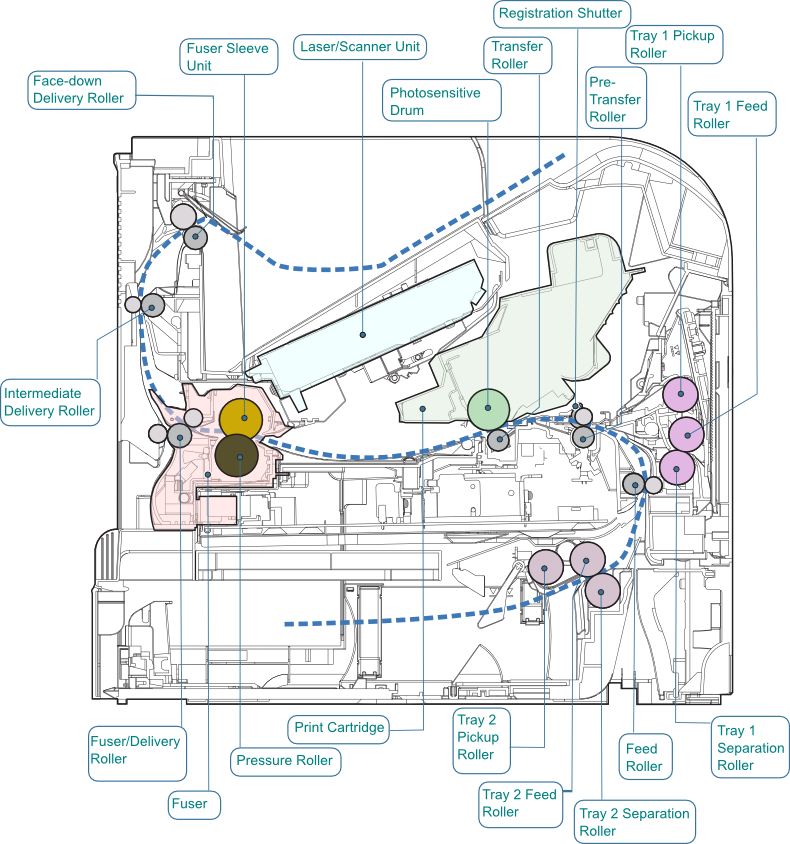
Operating Principles
Laser printers use cut-sheet paper so the printer first has to get a single sheet moving from a stack of up to 500 in the cassette tray. The pickup roller RM1-0036 nudges a sheet forward between the feed and separation rollers RM1-0037. The rollers both have soft rubber tyres. Both rollers are actually driven in the same direction, anticlockwise in the diagram. However the feed roller is driven more powerfully than the separation roller so if a single sheet arrives the feed roller overcomes the separation roller and the page proceeds so that a second set of hard feed rollers ( RM1-4527 ) takes over. If two sheets arrive the separation roller underneath grips it and pushes it back towards the stack in the tray. Because the rollers work against one another they do eventually wear out, kit CB506-67904 supplies a new set of rollers that just clip into place. Drop down MP tray 1 works the same way but uses a different set of rollers CB506-67905.
Paper is then held momentarily and straightened by the registration shutteruntil the photosensitive drum has begun producing an image. The page reaches the drum just as the image is ready to transfer. The image is stripped from the drum and onto the page by the transfer roller CB506-67903 .
The page image is created line after line in the laser scanner unit RM1-7419 . The laser is above the cartridge and shines onto the drum. The laser gets a pattern of dot-dash pulses from the formatting electronics CB438-69002 and translates them to bright infra-red light. A polygon mirror on a fast motor scans this image onto the drum. The laser in these machines is actually a dual unit- it writes two interlaced lines at the same time. The dual laser contributes to print speed.
The drum is enclosed as part of the CC364X cartridge; it turns clockwise in the diagram. As it does so it is charged with static at the top by a pre-charge roller, then scanned with the image which leaves some parts discharged. Those parts pick up an image in toner powder which will be transferred to the page at the bottom of the drum movement when it is over the transfer roller.
The image made by the laser has now been converted into a pattern in static electricity, then into a pattern in toner powder and deposited on the page. It is only being held to the page by static charge at this point.
The fuser CB506-67902 is a heater and a pressure roller. As the page passes through it the toner turns sticky and is forced into the page by the pressure.
The page is now finished - it can exit onto the rear face-up tray but people tend not to use that because it takes up too much space. Instead the page goes up to the face-down tray on top of the machine.
Cartridges
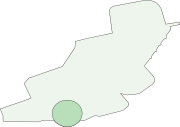
Cartridges are by far the greatest cost in owning a printer. Machines like the P4014 series are normally bought to be used heavily, so running costs are a key issue.
People buy printers like the P4014 series because of the low running cost of 1p per page or less and a maintenance cost that can be less than 0.1p per page. Cartridges are one of the keys to keeping print trouble-free.
Cartridges were originally introduced to reduce the need for special knowledge and allow computer printing to be a mass market. The HP cartridge contains a lot more than just toner, it has the developer, drum and waste cleaning blade wrapped into a wedge shape that pushes into the printer between the laser scanner and the paper path.
HP's success today is a result of getting this toner delivery system right. They got to market first in 1984 with a low-cost laser printer that was easy to look after thanks to use of cartridges . Apple used the same print-engine but their chosen PostScript language required too much computer power and they withdrew from printers in the late 1990s. HP's other rivals like DEC with the LN03 or Kyocera with the FS800 used two or three part consumables that promised lower costs but struggled to deliver because of troublesome hardware.
Computer and Printer Prices
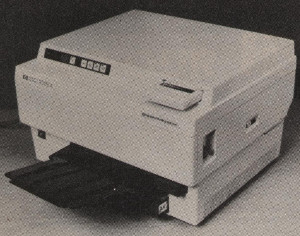 LaserJet Classic at introduction - $3495
LaserJet Classic at introduction - $3495These big cartridges may seem expensive but actually they seem in line with history. Big cartridges are not expensive for what you get; its that printers are ridiculously cheap.
Comparing prices over time can be difficult. The LaserJet "classic" was introduced in the US in 1984 at $3,495, equivalent to £2,250 GBP at the time. It didn't make it to the UK for a year or so, PC USER
magazine in July 1985 carried a brief mention on page 54 - Zygal would be introducing them at £3,595 (The UK market has rip-off tendencies, so dollar prices can be helpful). At today's prices after years of inflation that printer might cost about £6,791.
Computer prices fall whilst power grows. Moore's Law suggests that the number of transistors on an integrated circuit can be doubled every two years. Memory capacity doubles as well, the original LaserJet came with 128 kilobytes and 24 years later the P4014n had with 128 megabytes - a thousand times more.
The LaserJet P4014 and its relatives are the most direct descendants of that first LaserJet, comparable in what they do and the intended users; just a lot faster. Price falls are curious, because printers are largely mechanical.
Mechanical things don't inevitably fall in price; cars for instance. My colleague bought a "Swift GTI" in 1990 for £8,700. It's similar successor is now £14,000. Car prices arguably fell compared to wages because the value of the pound has halved; £8,700 is equivalent to £ 19,347 today. Car prices rose in absolute terms, whilst printer prices plummeted.
Printers have bucked the trend for the price of mechanical things to rise. Mass production and automation helped. Holding down the cost of printers and making money on cartridges is another factor.
Price comparisons thisismoney prices and inflation calculator.
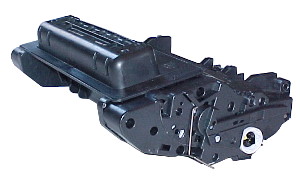
Cartridge pricing is contentious. Over the years print brands discovered they could gain market share by selling printers cheaply but making cartridges rather expensive. This strategy beguiled the home and small business market; the lure of colour inkjets for under £100 proved very effective - at least until people realized that there were several costs to printing. Cheap printers have expensive cartridges, lower build quality and higher support costs.
HP's big office printers like the P4014, M601 and M604 are rather different. Running costs are much lower and reliability is far better than cheap inkjets - and better than most other laser printers. Modular construction makes swapping the fuser or even the formatter easy.
There are hints of that cartridge strategy though. Printers are much cheaper than they used to be. The original LaserJet was priced at $3,495 in 1984 money. A mere $475 will now get the much more capable M604n printer which is more than 5 times as fast, expandable and has network capability - so a better printer for a seventh the price.
Cartridge prices haven't fallen. Arguably they wouldn't because they are mechanical. The LaserJet cartridge had a capacity of 4,000 pages and a street price of about $60 as did the LaserJet II 92295A (SX engine) cartridge. HP discontinued the 92295A cartridge in 2007, but its price had held fairly steady over the years.
The "64A" cartridge for P4014 costs about $150 - more than twice the price of its ancestor. It does have double the capacity at 10,000 pages so the "value proposition" is not very different.
The cost of printing with these big machines is somewhat lower than it was in 1984 largely because the price of printers has fallen. Printer prices are almost insignificant, even with top-end machines like the P4515 (or now the M606). Its the running cost that counts.
Getting Costs Down
If you want masses of low cost print in 2015 the P4015 and P4515 remain the right tools for the job (and the P4014 is quite good). This printers successors the M602 is similarly good. Cartridge re-manufacturers are tooled up for the job, components are available and prices are about as low as they can be.
Cartridge pricing is a commercial cold-war and not just between print brands. The brands design cartridges specifically for a printer. Each new generation of cartridges has patents and copyrights that aim to prevent anything compatible being made.
If your primary aim is clean crisp correspondence with an undisturbed office routine then a new printer and HP original cartridges may suit you very well. HP originated the printer and cartridge design and know precisely how both work. Nobody else can, even if they have vast experience of electrophotography because they don't have access to the printer's firmware source code.
But if you just want masses of print remanufactured cartridges in an older machine get costs right down.
Remanufactured Cartridges
The CC364A cartridges for the P4014 are quite easy to dismantle and remanufacture. HP are well known to be the biggest brand and these printers play a big part in the market, so there is a good supply and big demand.
Re-manufactured and refilled cartridges are widely available for these machines. These don't pose legal problems providing non-copyright toner and components are used. HP seem to tolerate remanufacture and haven't made it difficult; just protecting things with a chip. Availability of cheaper cartridges is part of many customers calculation and an advantage for HP over Lexmark and the other smaller brands.
HP don't insist on their own cartridges being used, even for warranty cover. There is a potential problem if you are using a non-HP cartridge and the service engineer identifies it as the problem; the call could be chargeable. If you have difficulty knowing, then buy an HP original and check whether the fault persists.
We find technical support more difficult ourselves if you don't have an HP cartridge. HP originals have reason to be more reliable so if there is a problem the first recommendation is try an original cartridge.
Refilling and re-manufacture bring inevitable caveats about reliability but can cut the cost of printing quite dramatically - well under half the HP price . Be prepared to understand your printer though. There is no automatic right to reliable print from refurbed parts; most work well and offer a good warranty - not all.
Choice of Cartridges
HP offer a choice of two cartridges with the Laserjet P4015 and P4515:
- HP 64A (CC364A) has a capacity of 10,000 pages. In 2013 the street price was just over £100 and this fell back a bit in 2015 to about £90.

- HP 64X (CC364X) has a capacity of 24,000 pages. Street price in 2013 was around £185 and in 2015 that had fallen to around £150.
The larger cartridge is also available as a two-pack bundle. Again the price fell from £336 in 2013 to £291 in July 2015. or so - cutting the price per page to about 0.6p which is generally considered quite low. You get a low print cost, but a pair of cartridges cost almost as much as a base model printer! Are cartridges expensive or printers cheap?
The P4014 was a cheaper machine to buy, but it can't take HP's "64X" high capacity cartridges. HP introduced the idea of high yield cartridges with the LJ-4250/4350 but with the P4014 they decided it should not fit the cheaper printer. If you have a P4014 it can only take the 64A 10,000 page cartridge.
Payback from being able to use big cartridges can be surprisingly short, as little as 40,000 pages. The difference in street price for the "P4014DN" and " P4015DN" printers could be as little as £100 (as it is for the "M604DN" and "M605DN" )
- Two packs of the big 64X toner with a combined capacity of 48,000 pages cost £300.
- Four packs of the smaller "64A" cartridge, capacity 40,000 pages cost £400.
… so towards the end of its second cartridge the more expensive machine can be saving money by printing at a lower cost.
By design, payback was supposed to be rather later - around 130,000 pages. HP seem to have planned on the P4014 selling at about £350 and the P4015 at £750 ($400 and $800 in the US) but that wasn't quite how things panned out. A vicious economic downturn, people hanging onto the older LJ-4200 series and competition from smaller printers undermined the market. Printer prices fell somewhat.
Printers like this aren't generally bought with the intention of printing less than 50,000 pages. If you only expected to do that, one of the essentially disposable machines from Epson, Samsung or Brother might suit. With the LaserJets the older 4200 series machines often reached half a million pages - and many topped the million. If you print half a million pages the purchase price of the printer pales into insignificance - even if it cost £500 its contribution to running costs would be comparable with that of maintenance kits at 0.1p per page. The significant cost is cartridges.
P4014 v P4015
Why did HP offer the P4014 if the cartridges are a bit small?
HP had to respond to situations where beancounters understand nothing but up-front price and insist that a printer is a printer - forgetting that cartridges are the real cost. The P4014 machines give HP something for those situations, you can have a cheaper printer.
The P4014 has some merits. It is essentially the same machine as the P4015 so users and support technicians don't have to switch skill sets. It takes the same accessories - and a tower of accessories is a lot more expensive than a printer. So its suited to branch offices where they probably won't print 25,000 pages in a year.
Print brands truly don't want you to buy big printers. Cute little printers are where the action and money are. People are tempted by cheap printers, they don't perceive a trap. Cheap printers have cheap little cartridges - with an emphasis on just how small they are. Print brands make money from naivety - and cartridges. The brands want you to buy cheap little printers; they only make big printers because some people resist temptation.
HP's big printers sell well, but not quite so well as they should. People underestimate how much they will print and think cartridge costs are all the same. As the table to the left suggests, cartridges for little printers are three times the price of cartridges for big printers. The environmental impact of a few big cartridges is better than hundreds of little ones as well.
There is no such thing as a typical user. Keen photographers merge into professional photographers. The secretary of a choral society may print a lot all year round whilst the producer of the Christmas play only prints much at the end of the year. Some sectors like law, finance and insurance are almost defined by how much documentation they produce.
Most people hardly print anything at home - estimates have suggested a couple of pages per day. Home users want colour and whilst the cheapest laser printers will just fit their budget they will get better pictures with an inkjet.
Office workers print a lot. US estimates average about 10,000 pages per year. Print is often quite transient, records of a transaction, delivery notes, labels - ephemera but essential to the business process.
UK estimates are that we print about 8,500 documents per office-worker year - a little less.
An office of 10 probably will print half a million pages over 5 years.
Costs of a Half Million Pages
The table lists the cost of the printer and cartridges required to print half a million pages - a reasonable target for a machine like the P4014, M602 or M604 series.
| Printer |  |  |  |  |  |  |
| Printer | P4015 | P4014 | P3015 | P2055 | P2035 | P1102 |
| Purchase | £750 | £350 | £290 | £190 | £130 | £80 |
| Cartridge Capacity | 24,000 | 10,000 | 12,500 | 6,500 | 2,300 | 1,600 |
| Cartridges used | 21 | 50 | 40 | 77 | 217 | 313 |
| Cartridge Price | £150 | £100 | £120 | £85 | £45 | £36 |
| Cartridge Cost | £3,150 | £5,000 | £4,800 | £6,545 | £9,765 | £11,268 |
| Total | £3,900 | £5,350 | £5090 | £6735 | £9,895 | £11,348+ |
Paper cost for half a million sheets might be about £2000. All laser printers use the same ordinary office paper.
The P4014 and P4015 will both use two maintenance kits at about £200 each. The economics of the P3015 would be spoilt a bit by using three maintenance kits at £150 or so and they are more difficult to fit. There is no official HP maintenance kit for the cheap printers like the P2055, P2035 and P1102 because the cost of a fuser is half the price of a printer making repair uneconomic. In getting to half a million pages you might consume 4 or more of those smaller printers - and actually that would have a comparable cost below £500.
You may be thinking "we will never print half a million pages". Have a look at your invoices for paper. If there are five or more of you in an office working in law, finance or insurance then you very probably will.
Maintenance Kits
Soft pickup rollers won't last for ever, neither will the transfer roller or fuser. You can just replace parts as they wear out, although a bit of knowledge might be needed to spot the problems the transfer roller causes. As well as just selling individual parts, HP provide maintenance kits to keep the printer going. Printers need another maintenance kit (or the parts) when they have used 10 of the big cartridges and more than 20 of the small ones. P4014/P4015 prompt with message PERFORM PRINTER MAINTENANCE
.
Maintenance kits are not cheap, generally a bit more expensive than the extra-large cartridge. The kit tends to be a bit cheaper than all the parts individually although that isn't always the case (and is a point we'll come back to).
Maintenance kits contribute very little to the cost of printing (maybe 10% the cost of cartridges ). However if you have to buy a kit and a toner it does cost nearly as much as a whole new M604 printer. Don't blame us, HP get most of the profit - and spares logistics are complicated (for them and us).
People sometimes balk at the cost of maintenance kits and buy another printer instead. Buying a cheaper printer is usually a bad decision. Almost all other printers cost much more to run than the P4014/ P4015. (Cheap printers two or three times as much - colour printers 10 times as much).
New printers bring other problems. In a rather pathetic attempt to drum up business printer brands provide a driver CD for MS-Windows but cram it with useless "crapware". Installation and use won't be seamless. A new printer may look good but frankly, fixing the old printer is likely to be less trouble and better value.
Pickup Rollers
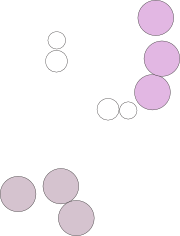
Paper jam problems are generally cleared by changing the pickup, feed and separation rollers for the relevant tray. Rollers could last 200,000 pages or more although we think these soft rollers tend to "go bald" around 50 to 80 thousand pages. Roller life depends on paper weight, surface character and the distribution of print jobs between the print trays - if you never use tray 1 its rollers will not wear, the rubber will just age a bit.
Soft rollers are used for cut-sheet paper pickup and feed operations in most modern printers. The soft rubber engages the microscopic structure of the paper where a hard rubber would just skid erratically. So soft rubber gives reliable feeding - until it wears out. (More on the principles here).
Rollers that wear are all quite easy to change - they clip on shafts. All the P4014/P4015 printers use the same set of rollers. In fact all the big mono printer from the LJ-4200 to date use the same rollers. The rollers are generally bought as kits.
- FKITP4014 is a complete set of rollers for a P4014, P4015 or P4515 with a multifunction tray.

- CB506-67905 is a set of three rollers for Tray 1 - the drop-down multipurpose tray on the front of the printer.
- CB506-67904 is a set of three rollers for Tray 2 and 3,4,5 or 6 where they are used. (These printers can be part of quite an impressive machine).
Fusers fail for three or four reasons:
- Most frequently the non-stick material on the sleeve loses its properties and the fuser creates "ghosting" on the page, this will gradually get more noticeable. Typically a bold headline can be seen as a smudge two or three times down the page. This problem is predictable at something over 225,000 pages.
- At some point the material of the fuser hot roller itself will suffer metal fatigue and fall to bits. This is somewhat less predictable.
- The heater will fail due to thermal cycling, power surges and wear from the metal sleeve. This is not very predictable.
- Users put labels or transparencies through the printer and they get stuck. People are surprised that the material in a fuser doesn't respond well to an attack with a paper knife.
Whilst fusers can be bought separately they are often bought as maintenance kits and sometimes cheaper that way. (HP logistics and pricing are quite mysterious).
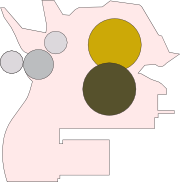
Fuser
Fusers last 225,000 pages and beyond, probably well beyond. Again it depends to some extent on the weight and surface of the paper. Fuser life also depends on page cover - a heavy black page will have more impact on the fuser non-stick properties. Materials such as envelopes and labels can also reduce fuser life, both because of material surface qualities, its thickness and because of the probability of an accident damaging the sleeve.
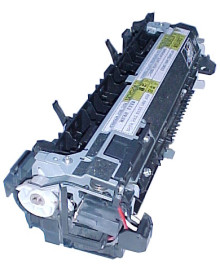
The same CB506-67902 / RM1-4579 fuser is used by all the printers (P4014, P4015, P4515).
People actually tend to buy the maintenance kit CB389A (CB389-67901) which contains both a fuser and a set of rollers. Fitting a complete maintenance kit in one action renews all the parts of the printer likely to fail. The maintenance kit also contains a transfer roller; changing the transfer roller will help improve the contrast of pages.
Everything in the maintenance kit is user changeable, although technicians who are familiar with the job may be able to do it more quickly. The transfer roller tends to give people most difficulty- use the little plastic hook to handle them. The printer needs a reset procedure to tell it the job has been done. The reset procedure depends on the firmware revision loaded on the printer.
Modern laser scanner units rarely wear out - or at least we only know two manufacturers that claim they do (OKI and Brother). When they do fail it is usually that the polygon mirror bearings have dried out and they can sometimes be got going by cleaning them up and applying light machine oil - its worth a try, anyway.
It is conceivable that the laser will fade or fail outright. These printers have dual beams so that might look like an odd diminution of resolution -we have never actually seen it.
Laser Scanner
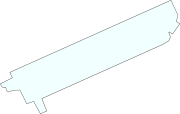
The laser scanner is available as a spare. In principle it wears out because the laser power will decline over 20,000 hours or so, but the circuitry compensates. The polygon mirror bearings will ultimately fail. In practice these problems rarely seem to hit. A decline in page contrast usually turns out to be
- the cartridge (swap it to test),
- printer cleanliness (clean all the contacts),
- the transfer roller (change it),
- or perhaps even the cleanliness of the lenses and mirror inside the laser scanner enclosure - clean them with a damp cotton bud (ideally dampened with isopropyl).
Laser scanner issues can happen. Printers monitor flashes of the laser using a signal called "beam detect" through the rotation of the polygon mirror so they can detect errors(Error 51.1).Faults caused by a bad laser scanner might also show as a jitter in the positioning of vertical lines on a page - the whole page looks out of focus but close examination shows vertical lines aren't quite straight.
The pictures below are links to pages on the printer models.
 P4014 Basic Version (CB506A) |  P4015TN Dual Tray Network Version (CB510A) |  P4515X Dual Tray Network Duplex and Mailbox Version (CB517A) |
Copyright G & J Huskinson & MindMachine Associates Ltd 2013, 2015. Some pictures derived from HP User and Service guides. These technical pages do not constitute an offer for sale; just our knowledge at the time of writing. See the catalog. Sales pages on this Web site use cookies to store user information. We also use Google Analytics to track site useage patterns.

